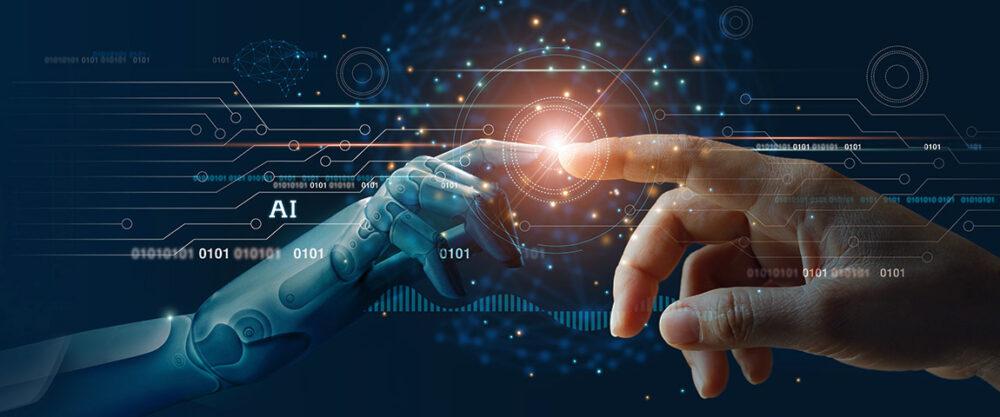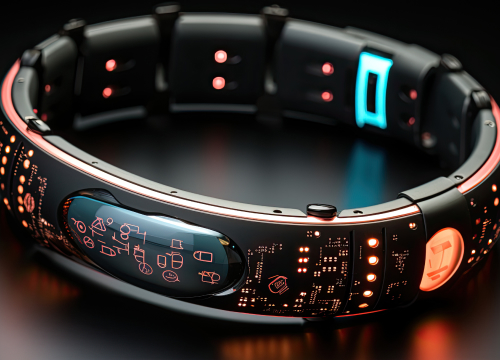Advanced technologies of the now continue expanding, reaching new performance depths, and bringing new levels of convenience to business management and software manufacturing – take the main spotlight items of the recent years – Artificial Intelligence and Internet of Things. Both tech concepts opened absolutely game-changing horizons for software manufacturers and consumers alike and they kept on advancing up until now. In particular, intricate combinations of the “best of both worlds” spawned a completely new term – AIoT or Artificial Intelligence of Things.
The combination of these particular tech concepts manifesting in the Artificial Intelligence of Things (IoT) is reasonable and highly efficient for a bunch of important reasons.
Reasons to Combine the Internet of Things and AI Capabilities
Essentially, using Artificial Intelligence for Internet of Things both completes and complements an interconnected IoT network. As a whole, numerous interconnected low-power devices require downtime-resistant, utterly convenient means of monitoring and control that is easily available at all times. Injections of artificial intelligence into the IoT infrastructure allow adjusting autonomous processes and ultimately boosting the reliability and stability of the whole system. Thus, the main reasons to employ the Internet of Things Artificial Intelligence systems include:
- IoT infrastructure automation
- In-depth traffic analyses and reports
- Smart predictions based on valuable data
- Achieving constant fail-proof system uptime
Fully realizing the popularity, practicality, and relevance of the Artificial Intelligence of Things (IoT), Sirin Software specialists have thoroughly analyzed the market and pointed out the following essential trends in this somewhat young yet highly promising niche.
4 Essential AIoT Trends and Tendencies for 2021
Most of the following market trends are focused on boosting the powers of IoT ecosystems by merging device interconnectivity capabilities with smart and precise powers of AI. Tons of providers have already been using Artificial Intelligence for Internet of Things in order to reach business-optimizing automation and smooth out tech functionality.
Expansion of IoT connectivity
The total number of IoT-connected devices all over the world is steadily passing the 12 billion mark, which is simply immense. Logically, the extreme demand for a technology where the quality and capacity of connection is the main characteristic calls for introduction of newer, better ways to interconnect. The most advanced connection formats that will most likely dictate the vast interconnection conditions in the future include:
- 5G – the 16th version of the popular protocol, helps to supply Internet of Things Artificial Intelligence devices with a low-latency, sturdy, and rapid mobile connection. And while it may not be the most affordable method to integrate, it should surely pay off in the long run soon after its implementation.
- Wi-Fi 6 – the natural evolution of the web connection standard used most commonly in households and enterprises alike in all parts of the world. The 6 GHz spectrum allows for a wider and faster bandwidth to easily support multiple data streams.
- LPWAN – the Low-Power Wide-Area Network is the “native offspring” of the Internet of Things Artificial Intelligence couple where, sometimes, the main goal is to cover a wide manufacturing area with interspersed little low-power devices.
- Zigbee – this increasingly popular standard focuses on device interoperability, used mostly in smart home solutions via a royalty-free connectivity plan.
Smart cities
Smart homes must have been a more relevant trend in 2019 and 2020, or earlier. But with the expansion of technological capabilities and arrival of the Artificial Intelligence of Things (IoT), smart city infrastructures took the lead. In many progressive cities of the world integration of wide-coverage 5G connection is already well complete. In this field, AI most beneficially helps accumulate, collect, and process extremely massive and rapid flows of data coming from a whole functioning city.
Healthcare solutions
The Artificial Intelligence for Internet of Things grants a firm foundation for life-saving intelligent interconnected healthcare systems across medical facilities all over the world. Rest assured that this sector will stay particularly relevant in terms of using AIoT solutions throughout the following years as COVID-19 is still out there to fight and defeat. Perhaps it is your Artificial Intelligence and Internet of Things solution that will push the progress of tackling this worldwide problem.
Edge computing
Integration of the Artificial Intelligence of Things (IoT) through remote servers connected to various infrastructure management points (traffic and parking cameras, automated tolling devices, etc.) is the next step remote reliability and data processing standards. It fills all the technical gaps of cloud computing and can efficiently employ AI for ultimate city automation.
Bottom Line
These are the major prospects of the joint Internet of Things Artificial Intelligenceadvancement and employment through industries. So if you are looking to reap profits in this fruitful field, you know where to direct your efforts. At Sirin Software we can help you implement outstanding Artificial Intelligence and Internet of Thingspowers to fit any vertical for any purpose.





